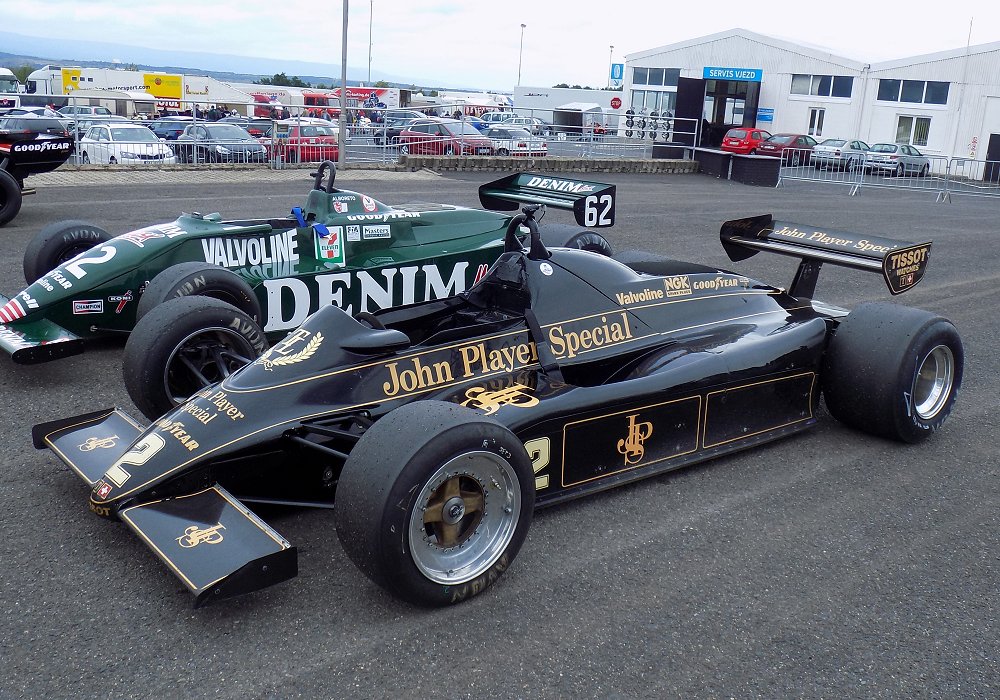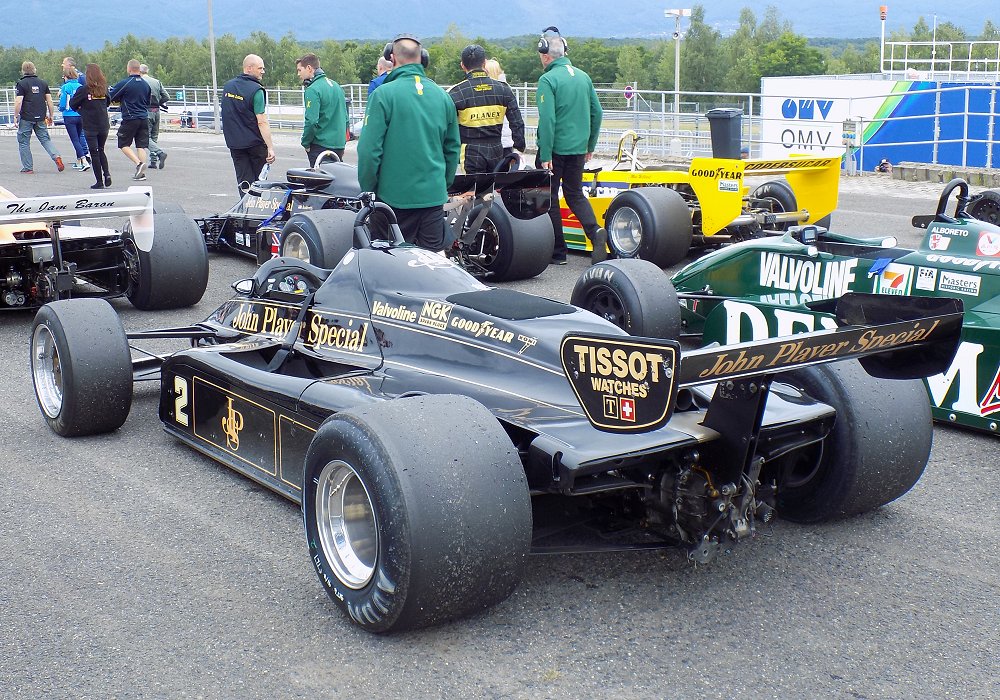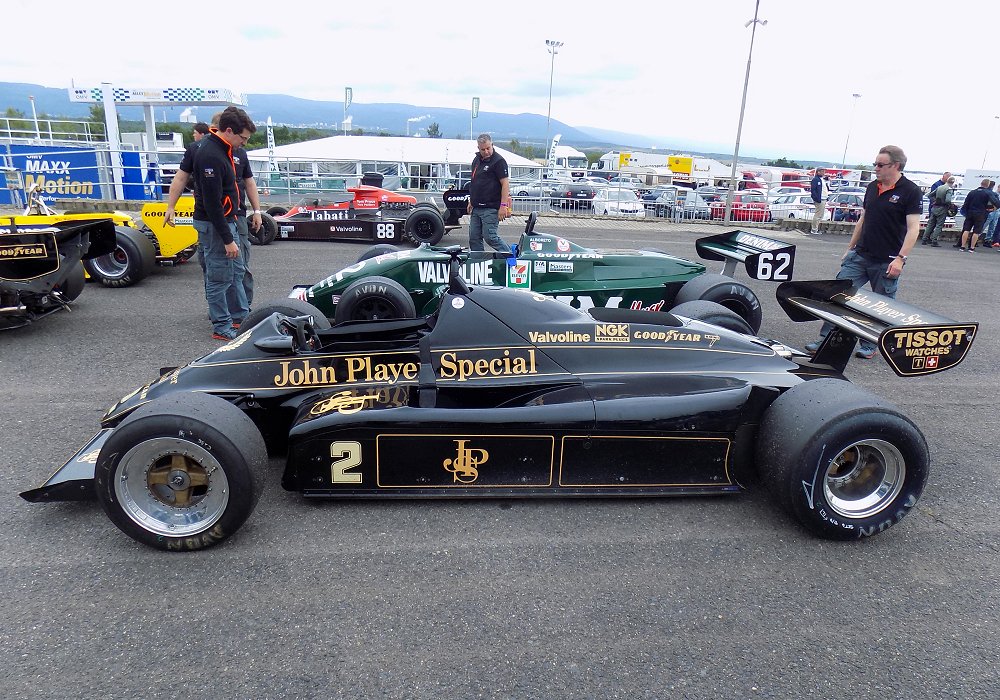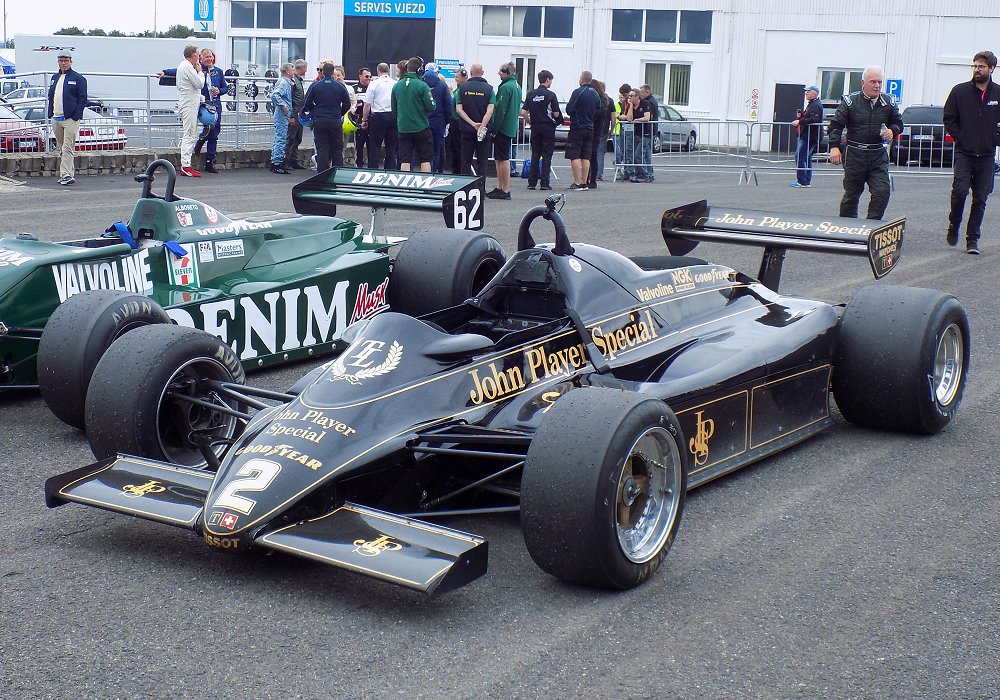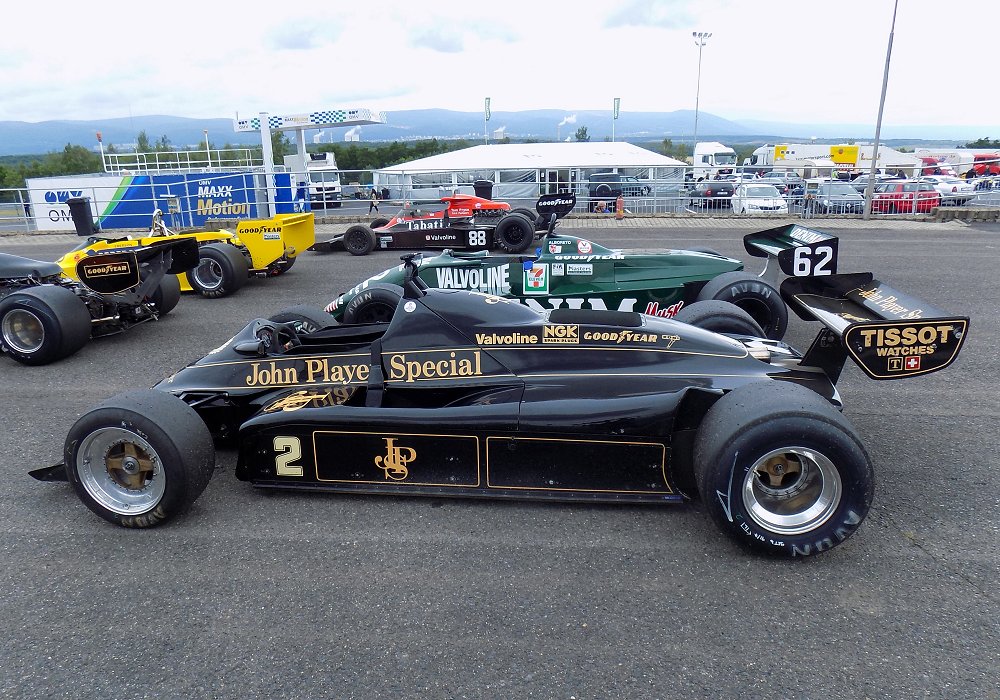Description
The Lotus 91/7 was introduced for the 1982 Formula One season and marked an important turning point for Team Lotus. After several difficult years experimenting with concepts that proved either uncompetitive or were outlawed, the 91 represented a return to disciplined engineering, clean aerodynamics, and a proven power unit. It also carried great historical significance: 91/7 was the chassis in which Elio de Angelis famously won the 1982 Austrian Grand Prix, securing Lotus’s first victory since 1978 and the final Grand Prix win for a naturally aspirated Cosworth DFV in the ground-effect era.
The car was designed by Martin Ogilvie and the Lotus engineering department under Peter Warr. Its structure combined aluminium honeycomb with carbon-fibre reinforcement, making it the first Lotus Formula One car to use carbon composite materials in its monocoque. Though not a full carbon chassis like McLaren’s MP4/1, it was noticeably stronger and stiffer than the earlier Lotus 87 and a major step forward in terms of safety and torsional rigidity. The 91 was built around the final, fully matured interpretation of ground-effect design: slim sidepods housing efficient Venturi tunnels, tidy body surfaces, and a low, narrow profile to maintain clean airflow underneath the car. Lotus had spent two years battling regulatory blocks on the twin-chassis Lotus 88, and the 91 was effectively a reset — a conventional but exceptionally tidy and well-executed ground-effect machine.
Power came from the Ford-Cosworth DFV 3.0-litre V8, an engine Lotus had helped debut back in 1967 and which, despite its age, remained beautifully responsive, reliable, and competitive when paired with a strong chassis. In 1982 specification it produced around 500 horsepower and worked with a Hewland FGA five-speed gearbox. The 91 was not the most powerful car on the grid — turbocharged Renaults and Ferraris held that distinction — but its light weight and low drag allowed it to be very effective, especially on circuits where handling and efficiency mattered more than sheer power.
Suspension followed the principles Lotus had refined through the late 1970s: double wishbones at the front and rear, with inboard coil springs and dampers actuated by rockers. The setup was very stiff, as ground-effect cars required a constant ride height to maintain Venturi suction. When the balance was correct, the 91 offered sharp turn-in, strong mid-corner grip, and a degree of stability that made it forgiving over longer stints. Both Elio de Angelis and Nigel Mansell frequently praised its steering accuracy, and the car developed a reputation for being predictable and confidence-inspiring — a welcome change after the nervousness of earlier designs.
The 91 began the 1982 season in competitive form, regularly qualifying in the top ten and scoring points finishes through the early races. As the team refined the tunnels and improved stiffness in specific areas of the monocoque, performance improved steadily. The highlight came at the Austrian Grand Prix at the Österreichring, where De Angelis drove chassis 91/7 to an unforgettable victory. In the final laps, Keke Rosberg closed rapidly, using the superior grunt of his Williams, but De Angelis held on by just 0.05 seconds — at the time one of the closest finishes in Formula One history. It was a defining moment for the team, signalling a long-awaited return to winning form after four seasons without a victory.
The Lotus 91 remained competitive throughout the latter half of the season, scoring additional points and regularly troubling faster turbocharged rivals. Although it was replaced the following year by the Lotus 92 and the team shifted its focus to turbo engines shortly afterwards, the 91 had already achieved its purpose. It restored stability within the organisation, provided a platform for driver confidence, and proved that Lotus could still produce a highly effective car even without experimental concepts.
In visual terms, the 91 was one of the most attractive cars of its period. Its slender proportions, tight packaging, and clean black-and-gold livery echoed Lotus’s aesthetic peak from the mid-1970s. It represented the final refinement of the classic ground-effect look before the arrival of more angular, turbo-dominated designs in the mid-1980s.
Today, the Lotus 91/7 is remembered as the car that brought Lotus back into the winner’s circle and reaffirmed the team’s competitiveness during a turbulent period in Formula One. It captured the final great moment of the Cosworth DFV era and stands as one of the most elegant and well-balanced cars from the last years of full ground-effect engineering.
